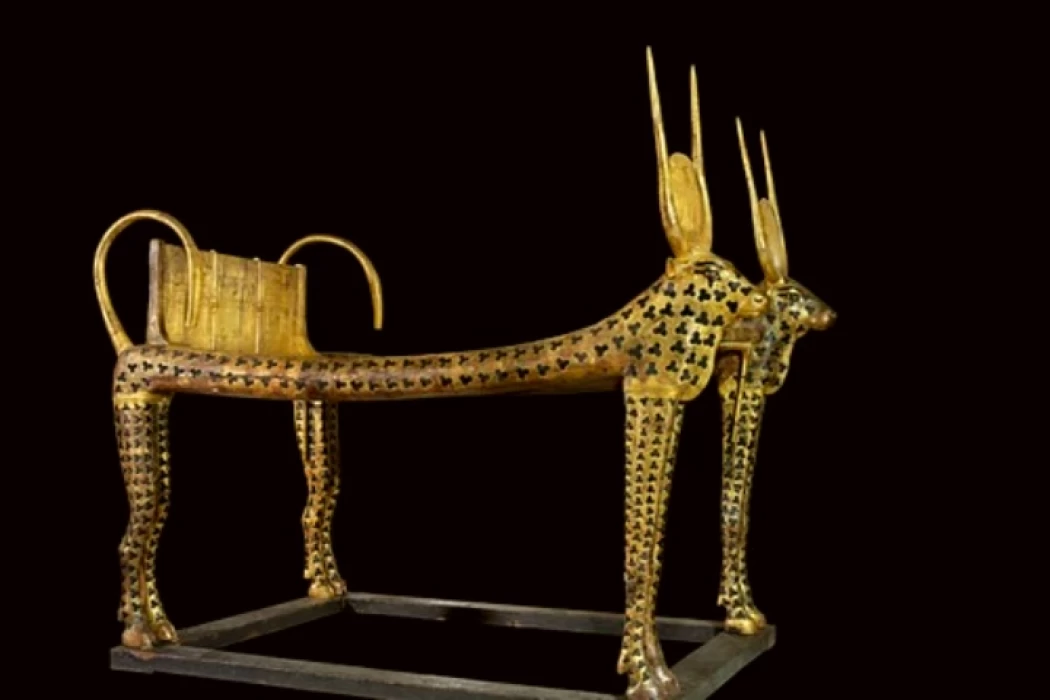
Mehet Weret | Dea dell'acqua
Mehet Weret
Veniva raffigurata come una mucca, sdraiata su una stuoia di canne, come una ragazza con la parte superiore di una mucca o come una donna attraente. In genere veniva raffigurata con un capo di abbigliamento a disco solare tra le corna. In genere è raffigurata con un Menat. (Il Menat, un gioiello con uno speciale contrappeso, non è un vero e proprio gioiello, ma uno strumento sacro a Hathor).
Dea dell'acqua
In quanto divinità dell'acqua, non solo viaggiava sull'acqua, portando con sé il sovrano o il dio del sole, ma si pensava che fosse in grado di portare l'acqua vitalizzante in Egitto. Era la divinità dell'inondazione annuale del fiume Nilo, come indica il suo nome, e quindi era abbinata sia al fiume dell'Egitto, sia al fiume del mondo sotterraneo, sia al fiume del cielo (la Via opaca). Mehet-Weret era una divinità delle acque di Nun, da cui emergeva il dio Sole, ed era chiamata Madre di Re (Ra).
All'epoca delle piramidi, Mehet-Weret descriveva la via d'acqua all'interno del cielo, percorsa dal dio Sole e dal re.
In quanto divinità della rinascita, non si pensava solo che facesse nascere il sole ogni giorno, ma che fosse in grado di facilitare la rinascita in vita. Nel luogo del Faraone d'Egitto esiste un letto da cerimonia, nello stile della divinità Mehet-Weret. Il corpo potrebbe essere posto sul letto per garantire un riferimento a Mehet-Weret e alla sua capacità di far nascere nel mondo sotterraneo. Dal XVIII secolo in poi, Mehet-Weret fu la divinità protettrice del luogo di sepoltura di Waset (Tebe) e fu raffigurata nei papiri di cerimonia come una mucca in piedi tra le piante di papiro ai piedi delle montagne dell'Occidente, con il solo gesto della testa. Hathor era raffigurata allo stesso modo.
Era una divinità celeste della mucca e, in quanto tale, era accoppiata a Hathor e Nut, che venivano raffigurate insieme come simpatiche dee del cielo. Come Nut, si pensava che desse vita quotidianamente al sole. Una volta che Mehen-Weret ebbe dato alla luce Re durante la creazione, si pensava che lo ponesse, a mo' di disco solare, tra le sue corna, ed è per questo che viene raffigurata con gli abiti di Hathor. A Tebe, una città vicina a Ipet-Resyt (Luxor)/Ipet-It (Karnak), si credeva che fosse la madre delle divinità autoctone, chiamate "i sette saggi".
Scoprite di più sugli dei e le dee dell'antico Egitto attraverso i tour di un giorno a Luxor. Inoltre, se riuscite a salire sul treno per un paio d'ore a nord, potete anche percorrerlo durante i tour di un giorno ad Assuan o anche durante il nostro tour di 2 giorni a Luxor da Assuan.
Prenotate ora per una grande esperienza di vacanze in Egitto e pacchetti vacanza in Egitto tour di un giorno a Luxor, tour di un giorno ad Assuan e tour di lusso in Egitto per godere del favoloso tour delle piramidi di Giza e della Sfinge, del tour del Museo Egizio, della Valle dei Re, del Cairo copto e islamico e del Tempio di Abu Simbel.
She was pictured as a cow, lying on a reed mat, as a girl with the top of a cow, or as an attractive lady. typically she was portrayed sporting the sun disk article of clothing between her horns. She generally is shown sporting a Manet. (The Menat, a piece of jewelry with a special counterweight, isn't truly jewelry - it's an instrument sacred to Hathor.)
As a god of water, she not solely traveled on the water, taking the ruler or sun god together with her, however, she was thought to be in a position to bring vitalizing water to Egypt. She was a god of the yearly inundation of the Nile River, as indicated by her name, so was coupled to each the river in Egypt, and also the river within the underworld, and also the river within the sky (the opaque Way). Mehet-Weret was a god of the waters of Nun, from that the sun god emerged, and was called the Mother of Re.
Mehetweret means "Great Flood." The Pyramid Texts make reference to her. She gives birth to the sun at the beginning of time, according to creation tales from ancient Egypt. Her hindquarters give birth to the god Ra in Chapter 17 of the Book of the Dead. A cow with the sun disk between her horns is how she is portrayed in art. She may also be known as the "Eye of Ra." She is connected to the goddesses Neith, Hathor, and Isis, with whom she shares traits. She is sometimes just a title for these goddesses. Among her specific titles were "The Island" and "The Hill."
As a god of water, she not solely traveled on the water, taking the ruler or sun god together with her, however, she was thought to be in a position to bring vitalizing water to Egypt. She was a god of the yearly inundation of the Nile River, as indicated by her name, so was coupled to each the river in Egypt, and also the river within the underworld, and also the river within the sky (the opaque Way). Mehet-Weret was a god of the waters of Nun, from that the sun god emerged, and was called the Mother of Re (Ra).
In the age of the Pyramids, Mehet-Weret described the waterway within the heavens, sailed upon by each the sun god and the king.
As a god of rebirth, she wasn't solely thought to provide birth to the sun daily; however, she was thought to be able to facilitate rebirth into a lifetime. there's a ceremony bed within the spot of the Pharaoh of Egypt, within the style of the god Mehet-Weret. The body might are placed on the bed to make sure a reference to Mehet-Weret and her ability to provide birth within the underworld. From the eighteenth kinsfolk forward, Mehet-Weret was the patron god of the burial site at Waset (Thebes) and was portrayed in ceremony papyri as a cow standing in papyrus plants at the foot of the mountains of the West, solely her head gesture out. Hathor was portrayed in the same manner.
Mebet-Weret's Roles
Mehet-Weret played an important role in the rebirth of the sun-god Re and the texts of the coffin of Mentuhotep II and of the tomb of Siptah in the Valley of Kings confirm this role and mention that the sun-god Re was reborn every morning between the thighs of Mehet-Weret and then Re appeared to the world and he was seen as a child issuing from the womb of the sky goddess or as a calf, the offspring of the celestial cow Mehet-Weret and this indicates that she is the great mother of the sun-god Re and she was as a creator goddess.
She was a celestial cow god and, as such, she was coupled to each Hathor and Nut, who were conjointly portrayed as nice cow goddesses of the sky. Like Nut, she was thought to provide daily birth to the sun. She was closely coupled to Nit, was portrayed as a cow god of creation, and called 'The Cow Gave Birth to Ra'. once Mehen-Weret gave birth to Re at creation, she was thought to own place him, within the style of a sun disk, between her horns, that is why she is shown sporting the article of clothing of Hathor. In Thebes a town close to Ipet-Resyt (Luxor)/Ipet-It (Karnak), she was believed to be the mother of the native deities, called "the Seven Wise People"















